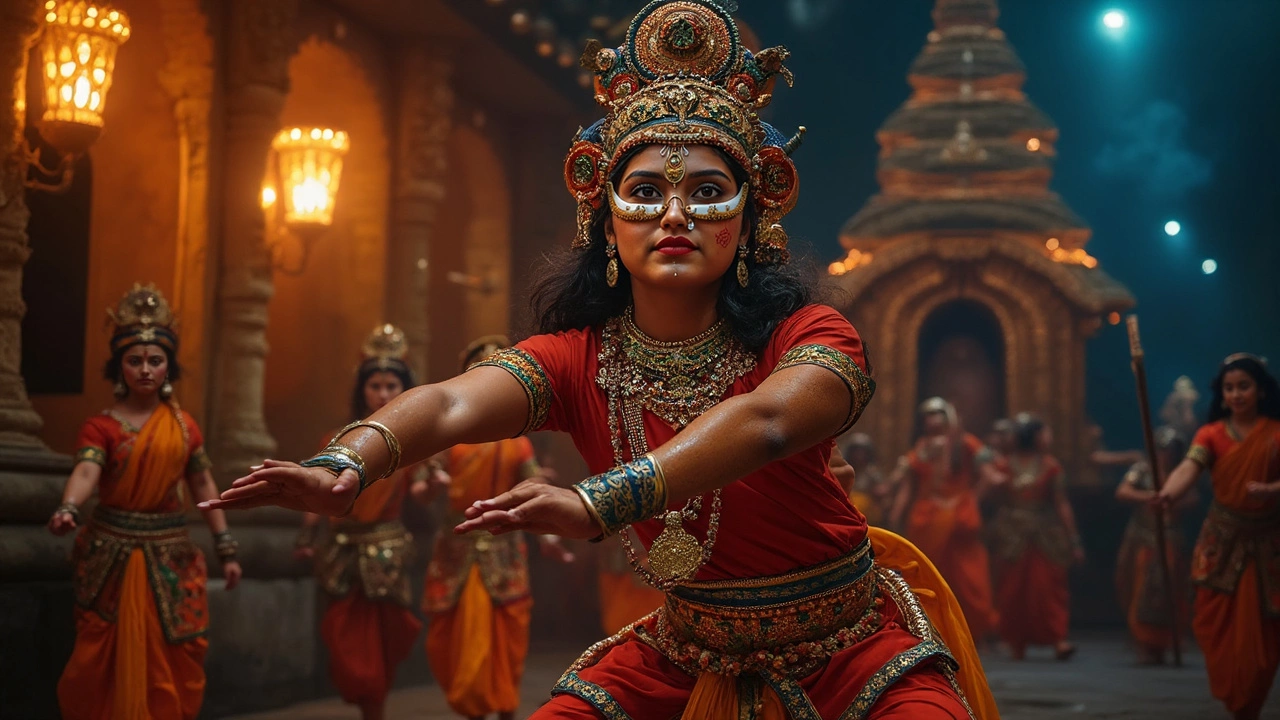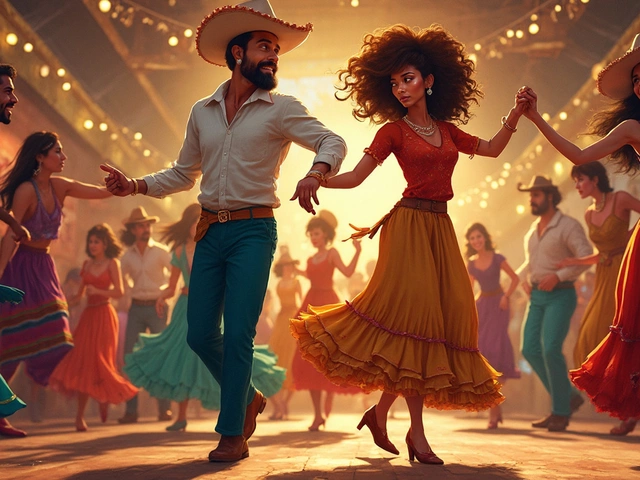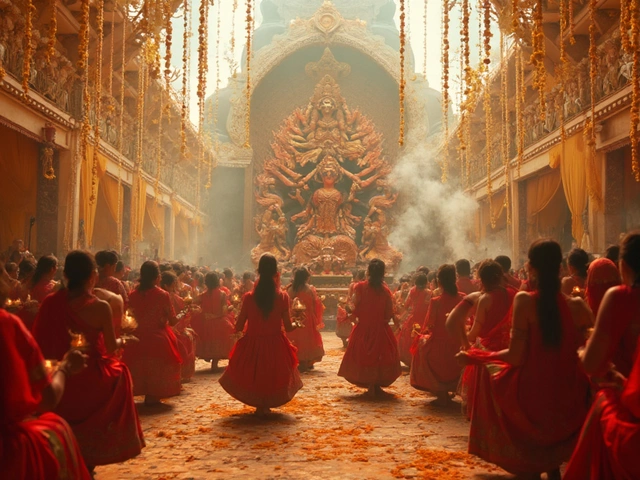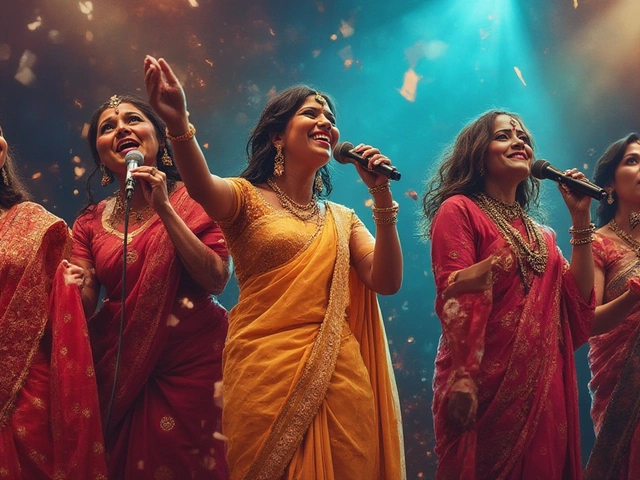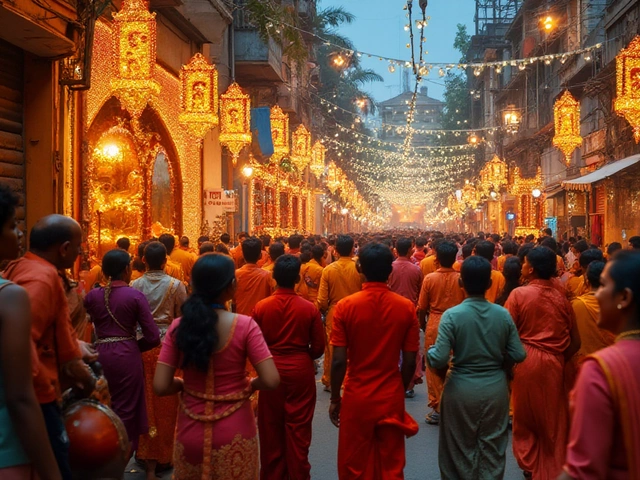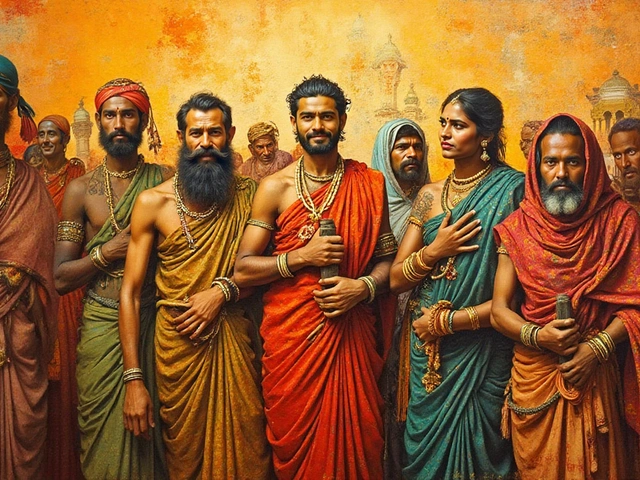If you've ever wondered which regional dance really tests its dancers, Kathakali would definitely steal the spotlight. Originating from the southwestern state of Kerala in India, this classical dance is a cocktail of storytelling, drama, music, and expression. It's anything but a casual hobby—Kathakali demands its performers to be in peak physical shape and heavily invested emotionally.
Imagine donning elaborate costumes, wearing heavy makeup, and training for years just to get the basics down. It's not just the dance movements you need to master; your facial expressions and hand gestures need to communicate complex tales straight from Hindu mythology. This complexity makes Kathakali not just a dance but a rigorous art form.
So, what makes Kathakali so tough? For starters, it takes enormous stamina. Performers rely on intense muscle control to bring characters to life. Unlike a leisurely ballet or jazz, Kathakali is a test of endurance. On top of that, performers undergo years of training to ensure every muscle and movement syncs with its story's emotion and drama.
- Unpacking Kathakali: The Challenge
- The Physical Demands
- Emotional and Artistic Mastery
- Cultural Significance and Impact
Unpacking Kathakali: The Challenge
Kathakali, one of the most intricate regional dances from India, isn't your average jig. This sophisticated art form combines storytelling, drama, music, and dance, pushing performers to fully embody their roles. So yes, it's no walk in the park. If you're thinking about what's involved, let's get into the nitty-gritty of what makes this dance so challenging.
One of the standout elements of Kathakali is its demand for extreme physical prowess. Dancers typically train for up to six years to master the technique. This isn't about just nailing the moves—it's about fine-tuning every muscle for precise movement and expression. You need to exhibit what they call 'navarasas' or the nine expressions, which is like playing multiple roles all at once.
Then there's the sheer physical endurance. A typical Kathakali performance can last anywhere from 6 to 8 hours. Imagine being on your feet, in a squat position, conveying tension, joy, anger, all without missing a beat. It's really hardcore. Hari Krishnan, a renowned performer and scholar, once said,
"Kathakali is not just about agility and strength. It requires the dancer to carry an emotional world within, which becomes visible one expression at a time."
But that's not all. There's the intricate costume and makeup, which can weigh over 20 kilograms. You're not just dancing; you're carrying a mini-stage on your body. Plus, the makeup is symbolic and has its own language. It takes hours to apply, with each color representing a different trait or mood. This level of commitment means having a robust knowledge of cultural nuances and themes.
- Storytelling: Adding drama and depth to performances.
- Characterization: The performer must fully embody the character’s traits.
- Audience Engagement: Dancers interact and communicate themes effectively through expressions and gestures.
You don't just perform Kathakali; you live it. And that's why it holds a significant place in the world of regional dance forms. Every function, every movement, makes it a challenge worth experiencing, whether as a performer or a viewer.
The Physical Demands
Diving into the gritty side of **regional dance**, the level of physicality in Kathakali is undeniable. Picture this: performers spend anywhere from five to ten hours a day in intensive training. This isn't just basic stretching or casual rhythm practice. We're talking hardcore, sweat-dripping workouts that challenge every muscle in the body.
Kathakali dancers need supreme flexibility and strength. The positions they hold—think deep squats and lunges—require not just skill but serious endurance. And while moving their limbs, they also need to sync their hand gestures and facial expressions meticulously. That's multitasking at a whole new level!
- Core Strength: The intense footwork involved requires strong core muscles to maintain balance and agility.
- Leg Muscle Endurance: Dancers continually use their legs in unconventional bent positions, which builds endurance but also demands it.
- Facial Control: Mimicking a wide range of expressions needs exceptional control over facial muscles. A slip here can alter the story's entire mood.
What's mind-blowing is that dancers also wear costumes weighing up to 30 kilograms. Can you imagine executing precise moves and holding tough poses without letting that hefty attire trip you up? This is why Kathakali performers are basically the superheroes of the dance world.
Let’s not forget, their eyes also undergo rigorous training—controlling eyelid movements to express complex ideas as if words were overrated. It might seem easy, but try it without looking like you're battling a dust storm!
These demands make mastering **Kathakali** not just about passion but also perseverance. Tough, but that's what separates the best from the rest.
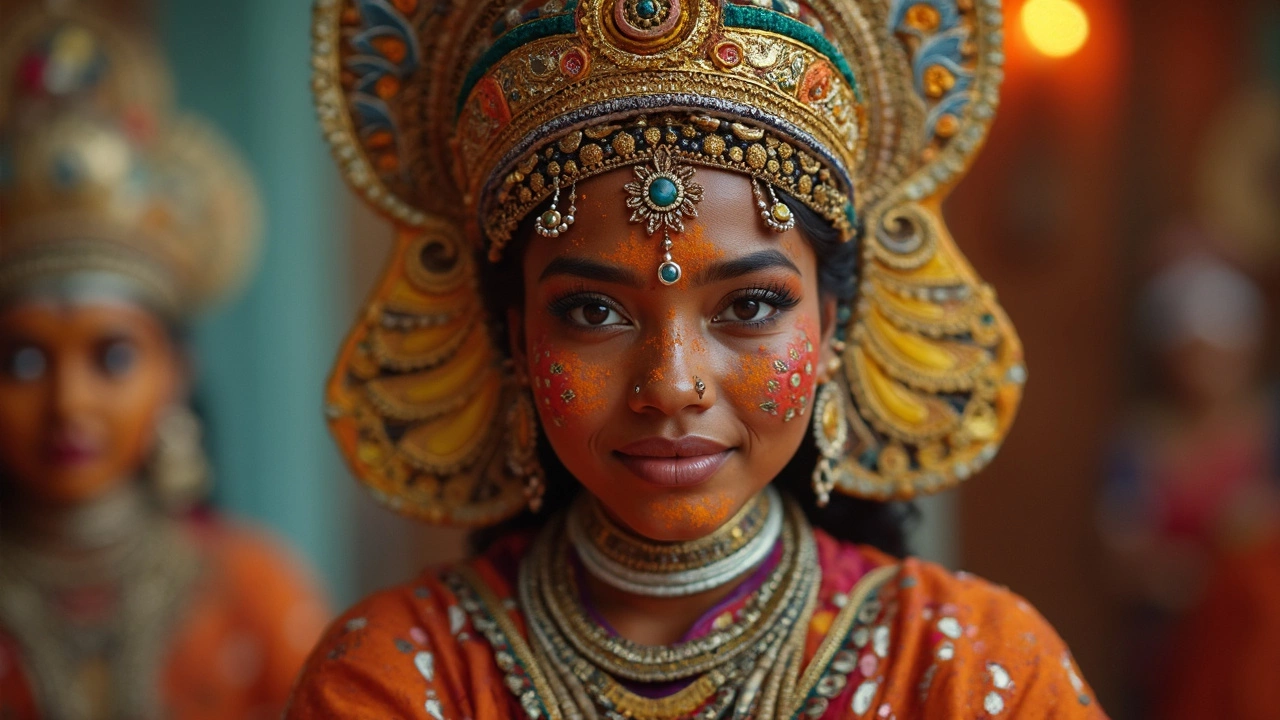
Emotional and Artistic Mastery
Dancing Kathakali is like putting on a live movie without dialogue. What sets this regional dance apart is the intricate facial expressions known as 'Navarasas' or the nine emotions. These range from joy and anger to courage and fear. Mastering these is not just about moving facial muscles; it’s about deeply 'feeling' and channeling the emotion. Imagine trying to convey intense hatred or divine love—it's all in those facial expressions and subtle body movements.
Before stepping into elaborate costumes, performers immerse themselves in the story, understanding every character nuance. This preparation is vital as Kathakali is a whole-body experience where emotions must radiate through every fiber. On stage, there's no verbal dialogue. Instead, every gesture and glance becomes the language, making the silent narrative powerful and gripping.
The emotional intensity is paired with artistic flair. Dancers perform to live music, which adds another layer to navigate. Musicians play traditional instruments like the 'chenda' and sing in Malayalam, which further roots the performance in its cultural essence. It's an impressive visual and auditory treat that demands synchronization between musicians and dancers. If the rhythm wavers, even slightly, the entire performance would suffer.
Moreover, each dancer depicts gods, demons, and heroes from Indian epics, each characterized by a distinct style and demeanor. Their craft relies on physical prowess and emotional depth, a blend that makes mastering Kathakali a lifelong pursuit.
Cultural Significance and Impact
Kathakali isn't just about the physical demands or the dramatic performances; it's a cultural gem that offers deep insight into the traditions of South India. This regional dance form enriches the cultural tapestry of Kerala, serving as a powerful medium for storytelling and preserving ancient Hindu myths and legends through its elaborate performances.
In Kerala, Kathakali is more than just art; it's a vital part of the cultural identity. It showcases the richness of tradition and provides an avenue for communities to engage with their history and mythology in a vibrant way. It's like watching a live-action historical drama, but on stage.
Dr. Nair, a renowned cultural historian, once said,
"Kathakali remains a transformative experience, bridging the past and present through its intricate storytelling and mesmerizing performances."These words remind us of how essential this dance form is to keeping cultural narratives alive.
Kathakali also draws tourists to Kerala, thus contributing to the local economy. Tourists seek authentic performances to experience this renowned aspect of Indian culture firsthand. It's a major attraction that leaves a lasting impression on visitors, reinforcing how art can connect with people across boundaries.
Though its roots are deeply traditional, Kathakali is not frozen in time. It evolves as contemporary artists add modern elements, which keeps audiences, both domestic and international, engaged. This adaptability ensures Kathakali's lasting impact, proving that old traditions can indeed thrive in modern settings.
